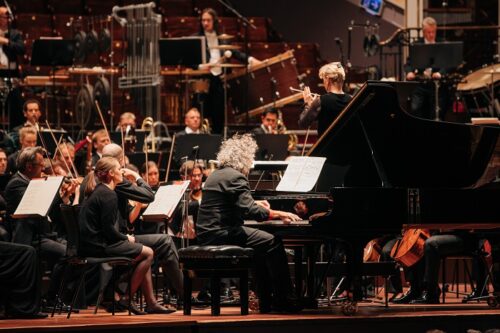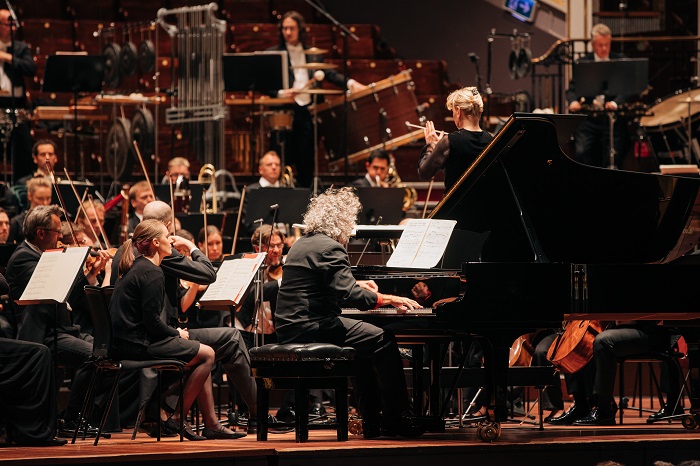
 United Kingdom Edinburgh International Festival 2022 [16] – Sibelius, Saariaho, Dieter Ammann: Andreas Haefliger (piano), Helsinki Philharmonic Orchestra / Susanna Mälkki (conductor). Usher Hall, 27.8.2022. (SRT)
United Kingdom Edinburgh International Festival 2022 [16] – Sibelius, Saariaho, Dieter Ammann: Andreas Haefliger (piano), Helsinki Philharmonic Orchestra / Susanna Mälkki (conductor). Usher Hall, 27.8.2022. (SRT)

Sibelius – Tapiola
Saariaho – Vista
Dieter Ammann – The Piano Concerto (‘Gran Toccata’)
It is an unusual thing when a piece of contemporary music gets both an international tour and a successful recording, so we need to take notice that Dieter Ammann’s Piano Concerto (for the purposes of this review I am leaving out the definite article in the title, much as that might annoy him) has had just that. And with the same artists. He wrote it for Andreas Haefliger, and the BIS recording features Haefliger and the Helsinki Philharmonic conducted by Susanna Mälkki (see review here).
So it is clearly a serious piece with a lot of conviction (and, surely, some serious financial backing) behind it, and it is a blazing ball of energy that scarcely lets up for thirty minutes. Ammann’s writing for the piano is relentless, fascinating and almost impossibly virtuosic. Sometimes the piano does battle with the orchestra, sometimes it blends into it, and sometimes it even merges with certain instruments, most notably when the piano, marimba and vibraphone sound, thrillingly, as one. Haefliger plays it like a man possessed, burning with his belief in the piece, with musical textures that range from the aggressively avant-garde to near honkytonk jazz. The orchestral texture is remarkable, too, with dazzling shards of orchestral colour firing at the audience from all directions. In one passage throbbing, tintinnabulating proto-minimalism, is undone by a spectacular collapse, melting into the texture of a lullaby. How Mälkki kept this behemoth together is a mystery to me. It is powerful to the point of aggression in places and can be a little unyielding at times. Listening to it is like going for nine rounds with a prize-fighter, so heaven knows what it must be like to perform. However, there is a lot here to get your teeth into, and I would definitely hear it again in another performance.
I am not sure I would say the same about Saariaho’s Vistas. She says it was inspired by a drive down the California coast, looking at the views/vistas towards the Pacific. There is little Californian warmth to it, though. It is a fluid web of sound whose lines slither into one another in what feels like an organic process, fragments of melody appearing and disappearing out of the texture, culminating in a great pile-up of sound towards the end. Her manipulation of the orchestra’s textures is impressive, but the overall tone of the work is so austere as to be forbidding, almost intimidating, and it is not a work I would gladly return to.
After all these extraordinary orchestral manoeuvres, Sibelius’s Tapiola sounded relatively straightforward! That is quite something when you consider what a miracle of concentration the composer’s final great orchestral work is, but if any orchestra on Planet Earth knows how to make the most of it, it is surely this one. The first thing you notice is the incredible depth to the string sound; its richness, dark colour and remarkable strength. They carry the weight of the unfolding structure, and it is a revelation to hear such multiple layers of texture delineated so clearly. Tapiola is not an intrinsically dramatic work, but played like this it was gripping, and as the final section begins abject terror appeared to grip the sound. Mälkki controlled it remarkably tightly, like an unfolding thriller, and the orchestra followed her to create a gripping piece of musical drama.
Simon Thompson
